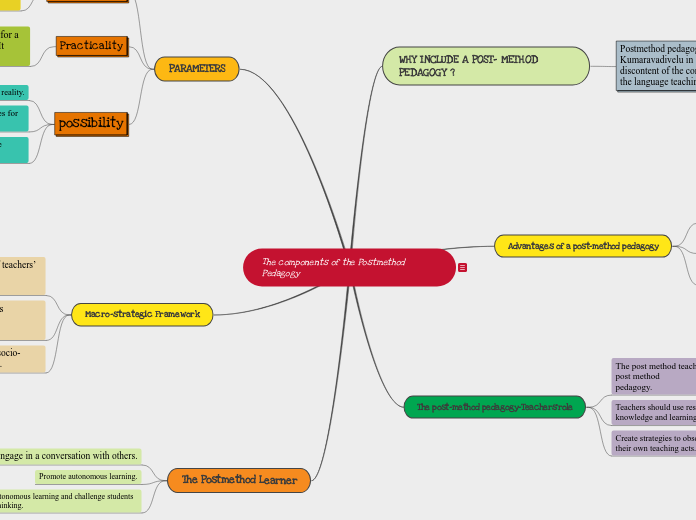The components of the Postmethod Pedagogy
WHY INCLUDE A POST- METHOD PEDAGOGY ?
Postmethod pedagogy is first put forward by Kumaravadivelu in 1994. It emerged from the discontent of the conventional methods and the language teaching.
Advantages of a post-method pedagogy
Create efficient teaching professionals.
Teachers will be able to create a
curriculum so that the contents can be relevant.
Raise awareness for language to teaching and teacher education.
The post-method pedagogy-Teachers'role
The post method teacher is seen as the heart of post method
pedagogy.
Teachers should use research methods as a knowledge and learning strategy.
Create strategies to observe, analyze, and evaluate
their own teaching acts.
PARAMETERS
particularity
An important pedagogy cannot be constructed without a general improvement of a real and particular situation.
Practicality
A pedagogy of practicacticality aims for a teacher generated a theory practice. It includes:
Teacher autonomy.
Reflective teaching.
Action research.
possibility
Be aware of the sociocultural reality.
Language education provides opportunities for self-identity.
Develop experiences that contribute to the pedagogic practices.
Macro-strategic Framework
Pedagogical interaction in terms of teachers’ awareness, autonomy, and
authenticity.
Encourage studenyts to take parts
in the contextual activities in the classroom.
Take into account local linguistic, socio-cultural and political particularities.
The Postmethod Learner
Engage in a conversation with others.
Promote autonomous learning.
Promote autonomous learning and challenge students to critical thinking.
